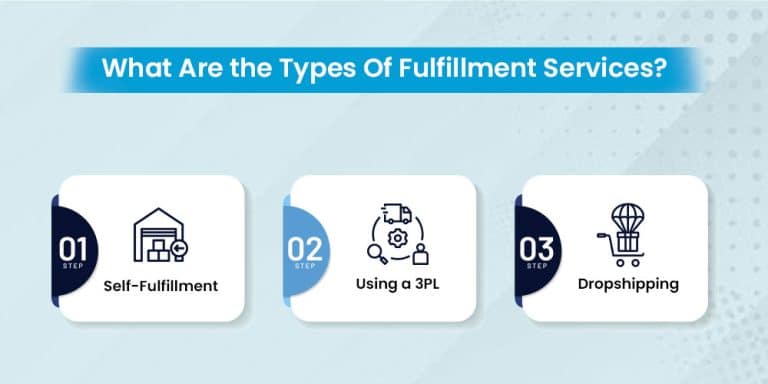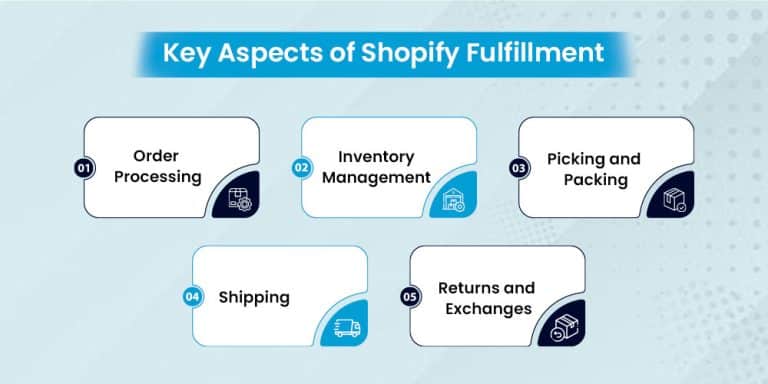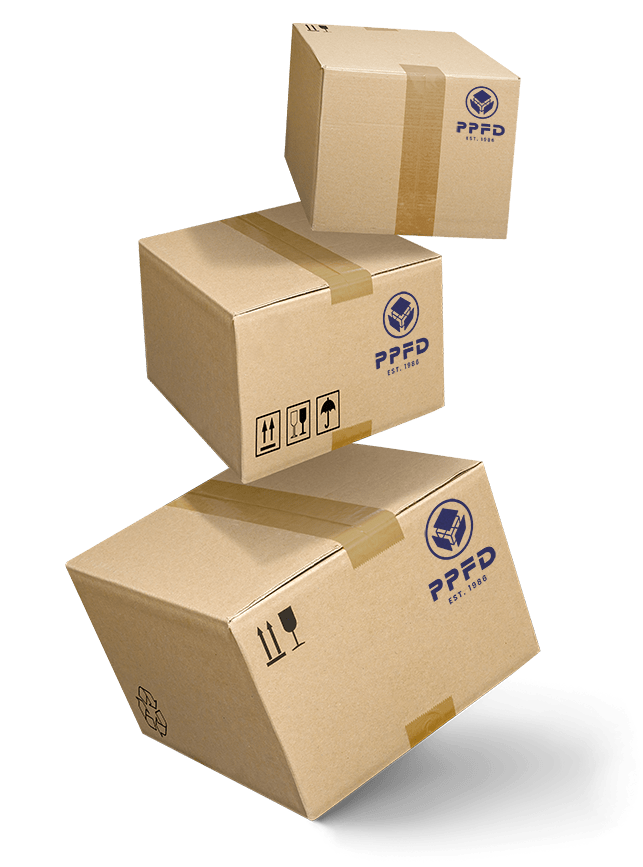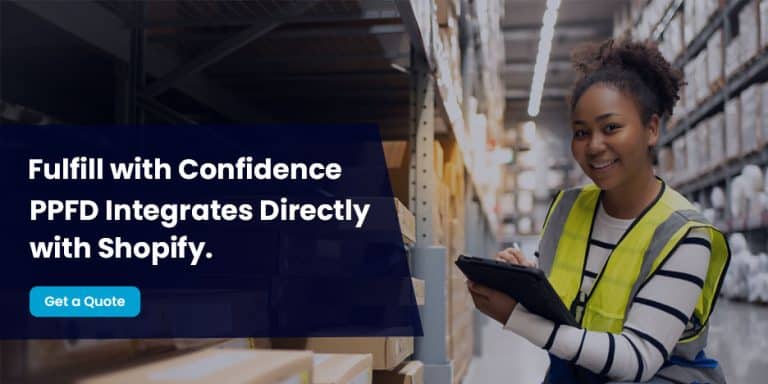Running an online store may sound exciting, until you know the hassle of dealing with shipping and fulfillment. The process of packing boxes, printing labels, and tracking deliveries can become overwhelming, especially, when the business grows.
This is where Shopify Fulfillment steps in to streamline the process. It takes the load off your shoulders and helps you deliver orders to customers quickly and reliably. What actually this fulfillment is and how does it work to make your life a whole lot easier?
These questions might be running through our mind right now. So, to get all your answers, and know everything in delta, read this guide till the end.
What is Shopify Fulfillment?
Shopify Fulfillment is that service which assists you to store, pack, and ship your products to customers. You don’t have to handle everything yourself, like keeping inventory at home, packing boxes, and running to the post office.
Shopify does it all on your behalf through their network of fulfillment centers. These are warehouses where all your products are stored safely and then shipped out as soon as someone places an order.
Here is how it works in short –
1. You send your products to a Shopify Fulfillment Center.
2. When a customer buys something from your store, Shopify picks, packs, and ships it for you.
3. Your customer gets their order quickly, and you don’t have to lift a finger
It’s a great option if you’re growing fast, want to save time, or simply want a more professional and reliable way to handle shipping.
What Are the Types Of Fulfillment Services?

When you need to ensure that your products reach the customers on time, Shopify provides you with different ways to handle fulfillment. Which one to choose totally depends on your business size, product type, and how involved you want to be in the shipping process.
The three main fulfillment methods available through Shopify are as follows –
1. Self-Fulfillment (a.k.a. In-House Fulfillment)
In this, businesses have to handle everything on their own. From storing products and managing inventory to packing and shipping orders. It is known as the most hands-on approach.
Pros
- Full control over the entire process
- You can add a personal touch to packaging and customer experience
- Lower upfront costs if you’re just starting out
Cons
- Time-consuming and physically demanding
- Can get overwhelming as order volume grows
- May require storage space, tools, and extra help
Best for – Small businesses, handmade or fragile items, or brands that want to have full control over the customer experience.
2. Using a 3PL (Third-Party Logistics Provider)
This option involves outsourcing fulfillment to a professional logistics company. They store your products, process your orders, and handle shipping for you.
Pros
- Saves time and reduces operational headaches
- Scales easily with your business growth
- Often comes with better shipping rates and faster delivery
Cons
- Less control over how things are packed and shipped
- You’re relying on a third party’s accuracy and speed
- Can get expensive for small businesses or low order volumes
Best for – Growing businesses, high order volume, or brands expanding into new markets who want to focus on marketing, product development, or scaling
3. Dropshipping
Dropshipping is a low-risk fulfillment model where you don’t keep products in stock. Instead, you list products in your store, and when someone buys, the order goes straight to a supplier who ships it directly to your customer.
Pros
- No need to buy or store inventory
- Easy to start with low upfront costs
- You can test different products without risk
Cons
- Limited control over product quality and shipping speed
- Harder to build a strong brand
- Returns and customer service can get tricky
Best for – New entrepreneurs, side hustles, or stores looking to test new products without investing in inventory.
Other Fulfillment Tools to Know
- Partial Fulfillment – You can choose to fulfill parts of an order manually. This is useful if some items are in stock and others aren’t.
- Automated Fulfillment – Shopify lets you set up automations to speed up tasks like processing orders and printing shipping labels.
- Inventory Management – No matter which method you choose, keeping track of stock is crucial. Shopify helps you monitor inventory levels so you don’t accidentally oversell.
Key Aspects of Shopify Fulfillment

1. Order Processing
As and when someone places an order, Shopify automatically receives all the details and gets everything organized in advance. It is the first step that ensures that the rest of the process flows efficiently.
2. Inventory Management
Exact inventory tracking is of utmost importance, and Shopify helps you keep an eye on your stick levels in real time. This helps you to know what is available, what’s running low, and what and when to restock. This way you can avoid overselling.
3. Picking and Packing
After the order gets processed, you need to look for the items in the warehouse and then pack them securely. This is what Shopify’s fulfillment centers are set up for. They ensure this process is quick and accurate so that customers get what they actually ordered, and in pristine condition.
4. Shipping
After packing, the order is handed off to a shipping carrier, like UPS, USPS, DHL, and others for delivery. Shopify works directly with these carriers to help ensure fast, reliable shipping. You can also customize delivery options and shipping rates based on your store’s needs.
5. Returns and Exchanges
Returns are a normal part of eCommerce. Shopify makes it easier to manage them by providing tools to accept returned items, restock inventory, and issue refunds or exchanges. A smooth return process builds trust and keeps customers coming back.
But returns are only one part of what’s called reverse logistics, the broader process of managing products that flow back from the customer to your business. To understand this essential aspect of eCommerce in more depth, read: Reverse Logistics Explained: Simplifying the Journey Back.
When Should You Start Using Shopify Fulfillment?
If you’re currently packing boxes late at night or constantly worrying about missed shipping deadlines, it might be time to think about letting Shopify take over your fulfillment.
Shopify Fulfillment is especially helpful if:
- Your order volume is growing and hard to keep up with
- You’re running out of space to store inventory
- You’re spending more time on shipping than marketing or scaling
- Your customers are expecting faster delivery times
Basically, if fulfillment is slowing down your growth or eating into your time, this service can be a game changer.
Meet PPFD: Your Shopify Fulfillment Partner
If you’re looking for a trusted fulfillment partner to streamline your Shopify store’s logistics, PPFD offers a professional, full-service 3PL solution built for modern eCommerce.
With decades of experience and a powerful integration with Shopify, PPFD helps you save time, reduce shipping errors, and deliver a seamless experience to your customers.
Effortless Shopify Integration
Through our dedicated Shopify fulfillment integration, we connect your store directly to our advanced Warehouse Management System (WMS). This means:
- Your Shopify orders are automatically imported in real time
- Fulfillment begins right away without manual input
- Tracking numbers sync back to your store for customer transparency
This smart automation eliminates fulfillment delays and reduces human error, making your operations smoother and more scalable.
Fast, Accurate Pick & Pack Services
Once orders are imported, PPFD’s team picks, packs, and ships them with precision. Whether it’s a single product or a custom kit, we ensure your packages are sent out on time and in perfect condition. You can also request custom packaging or kitting to match your brand.
Real-Time Inventory & Order Management
The integration keeps your inventory up to date in real time. No more guessing stock levels or worrying about overselling, PPFD’s system helps you stay in control while they handle the backend logistics.
Frequently Asked Questions
How much does Shopify Fulfillment cost?
There’s no fixed price, it depends on your specific needs. You’ll typically pay for storage space, pick-and-pack services, shipping, and handling returns. The good news? You only pay for what you use, and there are no upfront software costs. Shopify provides a pricing estimate based on your products and order volume once you apply.
How does Shopify Fulfillment actually work?
A customer places an order → Shopify automatically sends it to a fulfillment center → your product is picked, packed, and shipped → tracking info is sent to the customer. All the behind-the-scenes logistics are handled for you, so you can focus on running your business.
Is Shopify Fulfillment a good choice for small businesses?
Yes, especially if you’re planning to grow. Shopify Fulfillment is designed to scale with you. Even if you’re a smaller brand now, it helps you offer professional shipping experiences from day one. Plus, you don’t need to invest in storage, staff, or software.
What do I need to get started with Shopify Fulfillment?
You’ll need:
- A Shopify store
- Inventory that meets Shopify’s fulfillment guidelines
- Products ready to ship to a fulfillment center
- U.S.-based customers (primarily)
Once you apply, Shopify will guide you through the setup if your store is eligible.
Share :
get started
Start creating a smarter, more effective distribution strategy
Our team is eager to partner with you and show why PPFD is the go-to choice for businesses aiming to streamline their logistics and distribution.





